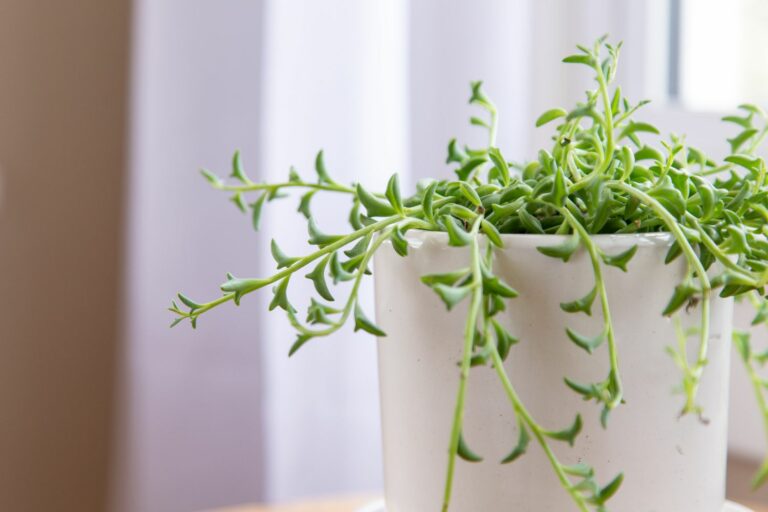If you ever wanted to bring oceanic vibes into your home, the exotic Dolphin plant – or also known as String of Dolphins (Senecio peregrinus) with its dolphin-shaped leaves is definitely for you.
These plants are native to Southwest Africa and they are an absolutely stunning addition to a vertical garden, plus can also grow upwards on a trellis. They are relatively low-maintenance plants, but since they can’t handle frost in the winter, many people just simply keep them indoors all year.
Care
Caring for Dolphin Plants is not very hard, because there are only a few things you need to pay attention to.
- Soil: Loose, arid, well-draining soil is where these plants like to live. You can buy basically any cactus mixes for potting, or just make your own with 1 part potting soil, 0,5 perlite, and 0,5 sand.
- Water: One of the worst things to do is to overwater these plants. They can retain water for a pretty long time, so you should only water them when the soil is dry. You should wait at least a few days between waterings.
- Sunlight: They require about 6 hours of sunlight every day, but they do not do really well in direct sunlight. Partial shade is preferred.
- Temperature: Growing these plants inside is the most common way because they do very well in average household temps. If you decide to have dolphin plants in your garden outside, just make sure to bring them inside before the first frost or anything below 40 deg. F.
Common pests
- spider mites
- aphids
- mealybugs
- scale
Propagation
Dolphin plants can be propagated pretty easily from stem cuttings (in soil or in water). Take the cuttings with at least 2 nodes, put them in water for a few days and pot them in the soil after they developed some roots.
If you want to propagate them exclusively in soil, just put the cuttings on top of the moist soil and let them develop roots.
Pruning
After the arrival of the first killing frost, it’s time to give your elephant ears a little trim. Wait for the leaves to turn a lovely shade of brown, usually about two or three days after the frost. When you’re ready to prune, focus on the base of the plant. With care, remove the leaves, leaving approximately 2 inches above the ground. Remember to make clean, straight cuts to ensure the foliage remains intact.
Avoid ripping or tearing the leaves to preserve the plant’s health. By following these gentle pruning steps, your elephant ears will continue to thrive and beautify your garden.
Frequently Asked Questions
Yes. Unfortunately, dolphin plants are toxic to pets.
Why is my dolphin plant dying?
Root rot is the most common issue when it comes to Dolphin plants. Overwatering them can really put a dent in them, so let the soil dry out for a few days. By the way, too little water can also cause them harm.
How often to water dolphin plants?
Always wait until the soil dries. Dolphin plants can hold water in their leaves pretty good, so you only need to water them a few times a week.
